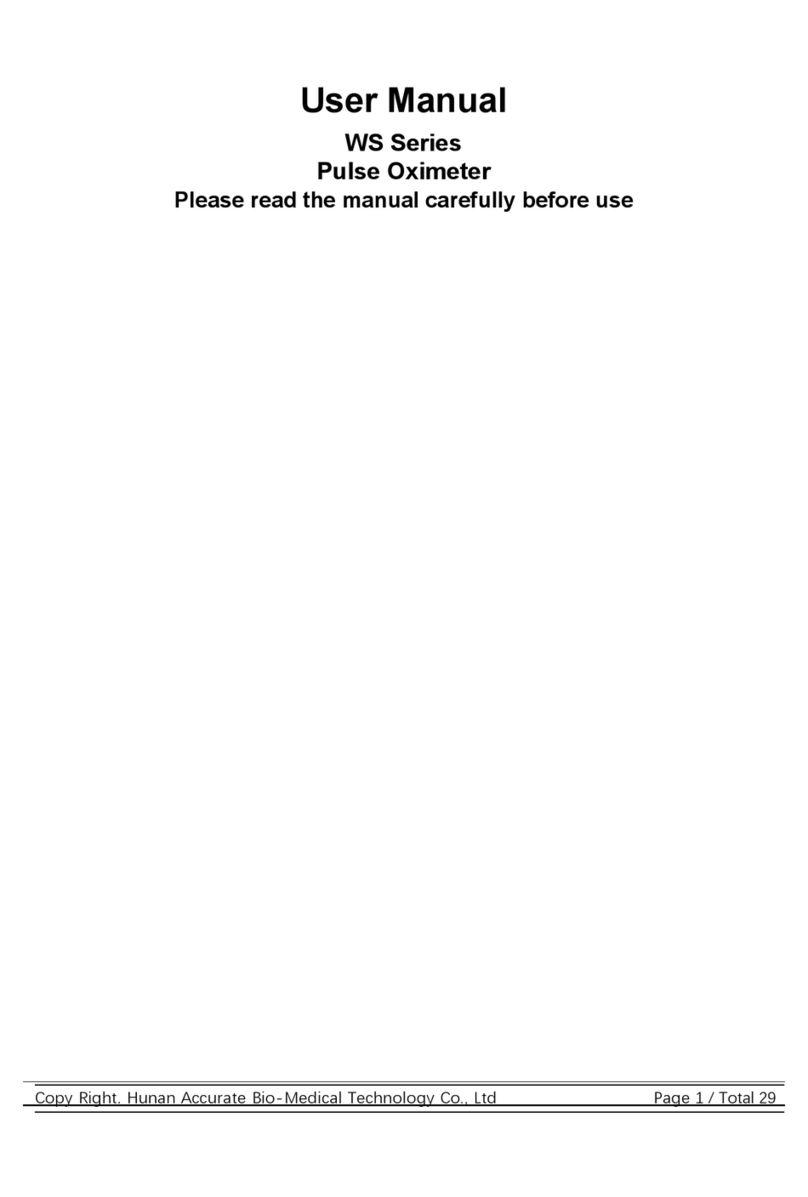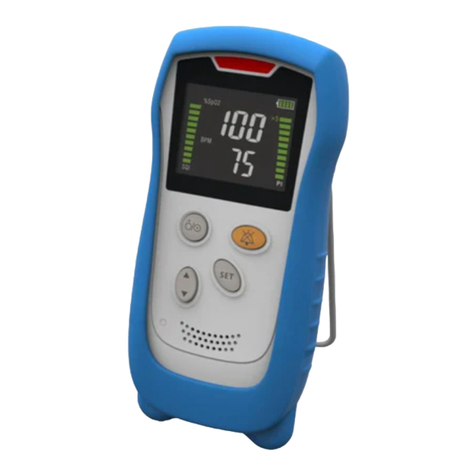
HS20A Pulse Oximeter Operator’s Manual HS20A-03-RDP-003 V4.0
Copy Right. Hunan Accurate Bio-Medical Technology Co., Ltd Page 5 / Total 39
4.3 Setting Alarm Limit ...................................................................................................................... 17
4.3.1 Setting PR High Alarm Limit ............................................................................................ 17
4.3.2 Setting PR Low Alarm Limit .............................................................................................17
4.3.3 Setting SPO2High Alarm Limit ........................................................................................ 18
4.3.4 Setting SPO2Low Alarm Limit .........................................................................................18
4.4 Data Storage ..................................................................................................................................18
4.4.1 Date Storage ON/OFF ....................................................................................................... 19
4.4.2 Date Storage Time Step ..................................................................................................... 19
5 Notices ..................................................................................................................................................... 20
5.1 Notice Categories ..........................................................................................................................20
5.2 Notice Levels ................................................................................................................................ 20
5.3 Notice Indicators ........................................................................................................................... 20
5.3.1 Notice Lamp .......................................................................................................................20
5.3.2 Notice Tones ...................................................................................................................... 20
5.3.3 Notice Messages ................................................................................................................ 21
5.4 Notice Tone Configuration ........................................................................................................... 21
5.4.1 Switch ON/OFF Notice Volume ....................................................................................... 21
5.4.2 Pausing the Notice Tones .................................................................................................. 21
5.5 When an Notice Occurs ................................................................................................................ 22
6 Measuring SpO2 .....................................................................................................................................23
6.1 Introduction ................................................................................................................................... 23
6.2 Safety .............................................................................................................................................23
6.3 Applying the Sensor ......................................................................................................................23
6.4 Settings ..........................................................................................................................................24
6.4.1 Setting Patient Type ........................................................................................................... 24
6.4.2 Adjusting the Notice Limits ...............................................................................................24
6.4.3 Setting VOL ....................................................................................................................... 24
6.5 Measurement Limitations ............................................................................................................. 24
7 Battery ..................................................................................................................................................... 25
7.1 Overview .......................................................................................................................................25
7.2 Installing the Batteries .................................................................................................................. 25
7.2.1 Opening the Battery Door ..................................................................................................25
7.2.2 Installing the Alkaline Batteries ........................................................................................ 25
7.2.3 Installing the Lithium Batteries ......................................................................................... 25
7.2.4 Charging the Lithium Batteries ......................................................................................... 26
To charge the lithium battery. .....................................................................................................26
7.3 Checking The Lithium Battery ..................................................................................................... 26
7.4 Disposing Of The Batteries ...........................................................................................................26





























